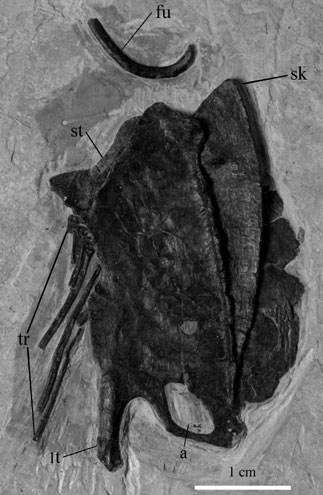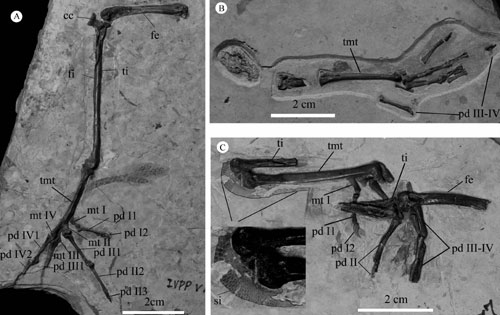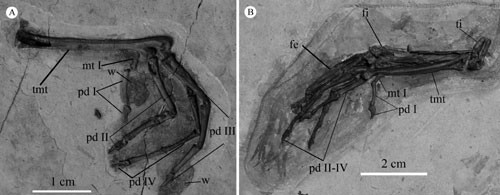| Location: Home > Research > Research Progress |
| New Material of Early Cretaceous Ornithurine Bird Gansus Supporting It’s a Volant and Diving Bird |
|
LI Yan, associate curator of Gansu Museum, collected 9 specimens of Gansus for further study during his fieldwork from 2002 to 2004. He and his collaborators from Institute of Vertebrate Paleontology and Paleoanthropology, Key Laboratory of Evolutionary Systematics of Vertebrates, Chinese Academy of Sciences, described some new anatomical features, as reported in the latest issue of Vertebrata PalAsiatic 2011(4), adding to our understanding of the skeletal anatomy of this basal ornithurine. Gansus yumenensis was about the size of a pigeon and similar in appearance to loons and diving ducks. It had many features common among modern birds, and also retained some primitive traits such as its clawed wings. LI and his collaborators described some newly discovered postcranial material of Gansus yumenensis, and such anatomical features include a laterally exposed sternum with a sickle-shaped keel, the ulnare with small metacarpal incision, complete loss of ungual of the minor digit, and manual phalangeal formula of “2−3−1”, as well as some more detailed features of the leg bones. “Based on some characters such as elongated phalanges and short claws with pointed flexor tubercles, Gansus yumenensis is regarded as the bird adapted to life in the aquatic environment. Our statistic analysis of the measurements of the sternum and major elements of the leg of Gansus further supports the hypothesis that this bird was a volant and diving bird, similar to that of extant ducks”, said Dr. ZHANG Yu-Guang, co-author, Key Laboratory of Evolutionary Systematics of Vertebrates, Chinese Academy of Sciences, and Beijing Museum of Natural History.
Fig.1: Furcula and sternum of Gansus yumenensis (Images by LI Yan)
Fig.2: Forelimbs of Gansus yumenensis (Images by LI Yan)
Fig.3: Hindlimbs and skin impression of Gansus yumenensis (Images by LI Yan)
Fig.4: Feet and web impression of Gansus yumenensis (Images by LI Yan) |



